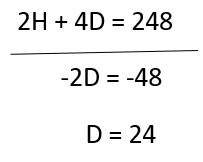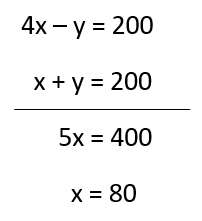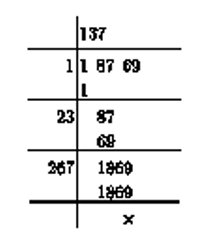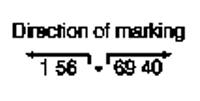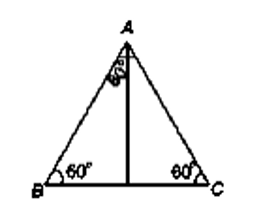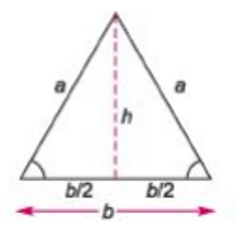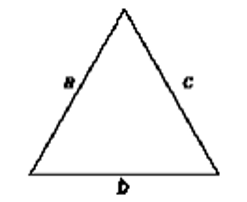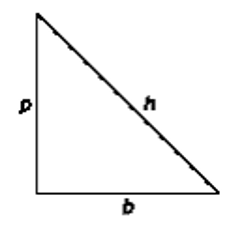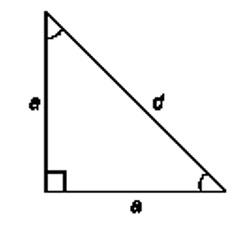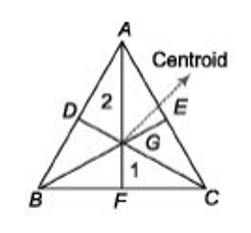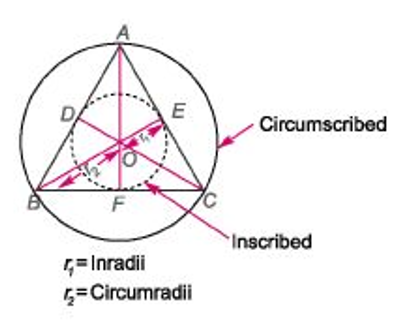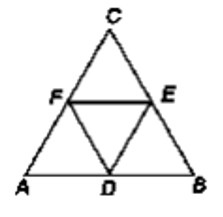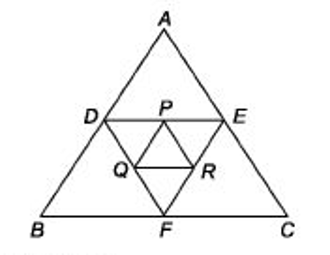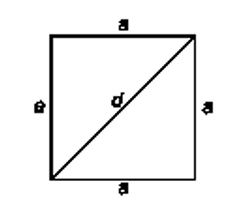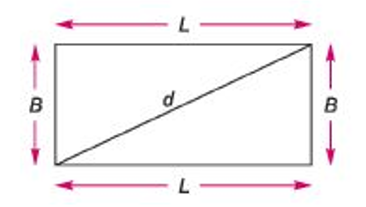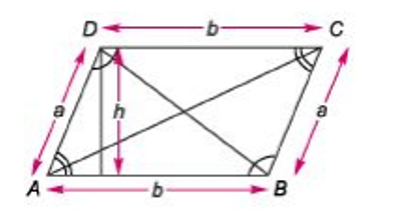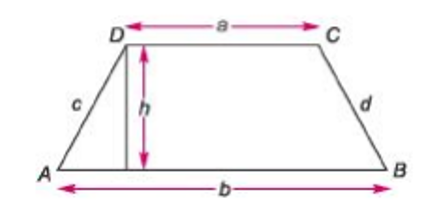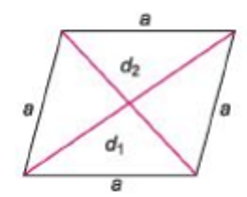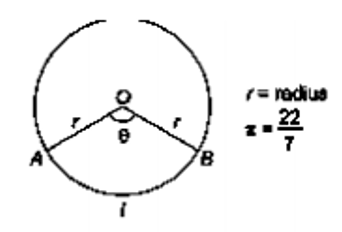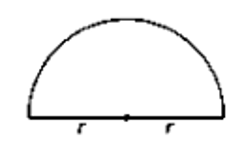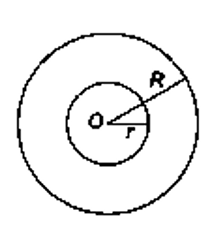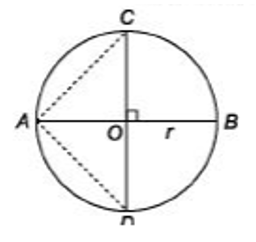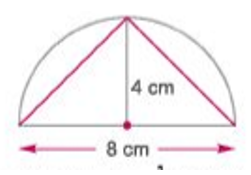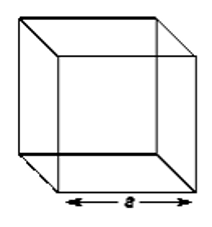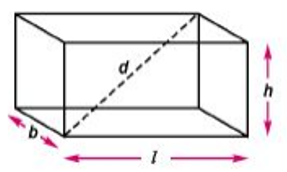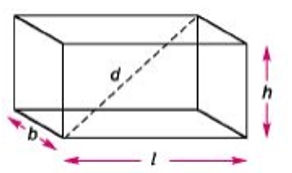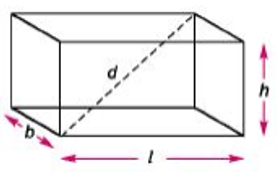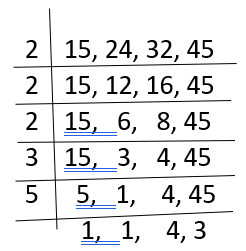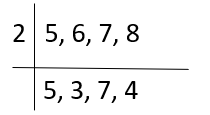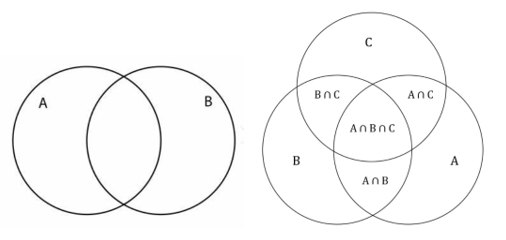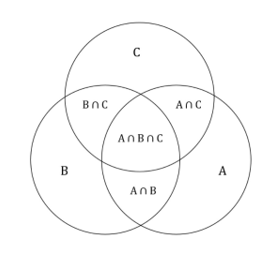Average: An average or an arithmetic mean of given data is the sum of the given observations divided by number of observations.
Properties of Average:
1. Average of a given data is less than the greatest observation and greater than the smallest observation of the given data.
Ex: Average of 3, 7, 9, and 13 = ((3 + 7 + 9 + 13)/4) = (32/4) = 8
Here Clearly, 8 is less than 13 and greater than 3.
2. If the observations of given data are equal, then the average will also be the same as observations.
Ex: Average of 6, 6, 6, and 6 = ((6 + 6 + 6 + 6)/4) = (24/4) = 6
3. If 0 (zero) is one of the observations of a given data, then that 0 (zero) will also be included while calculating average.
Ex: Average of 3, 6, and 0 = ((3 + 6 + 0)/3) = (9/3) = 3
NOTE:
· If all the numbers get increased by a, then their average must be increased by a
· If all the numbers get decreased by a, then their average must be decreased by a
· If all the numbers are multiplied by a, then their average must be multiplied by a
· If all the numbers are divided by a, then their average must be divided by a
Important Formulae Related to Average of Numbers:
- Average of first n natural numbers -

- Average of first n even numbers = (n + 1)
- Average of first n odd numbers = n
- Average of consecutive numbers =

- Average of 1 to n odd numbers =

- Average of 1 to n even numbers =

- Average of squares of first n natural numbers =

- Average of the cubes of first n natural numbers =

- Average of n multiples of any number =

Examples:
1. Find out the average of 4, 7,10,13, ..., 28, 31.
Solution. Here, the difference between any two numbers written in continuous sequence is 3.
Hence, this is a series of consecutive numbers.
As, we know, average of consecutive numbers = 
Here, first number = 4 and last number = 31
Therefore, required average = 
2. Find the average of all the odd numbers and average of all the even numbers from 1 to 45.
Solution: According to the formula,
Average of 1 to n odd numbers = 
Here, the last odd number = 45
Therefore, Average of 1 to 45 odd numbers = 
Again, according to the formula,
Average of 1 to n even numbers = 
Here, the last odd number = 44
Therefore, Average of 1 to 44 odd numbers = 
3. The average salary of the entire staff in an office is $200 per day. The average salary of officers is $550 and that of non-officers is $120. If the number of officers is 16, then find the numbers of non-officers in the office.
Solution: Let number of non-officers = x
Then, 120x + 550 x 16 = 200 (16 + x)
=> 12x + 55 x 16 = 20 (16 + x)
=> 3z + 55 x 4 = 5 (16 + x)
=> 3x + 220 = 80 + 5x
=> 5x - 3x = 220 – 80
=> 2x = 140
=> x = 70
4. The average runs scored by a cricketer in 42 innings, is 30. The difference between his maximum and minimum scores in an innings is 100. If these two innings are not taken into consideration, then the average score of remaining 40 innings is 28. Calculate the maximum runs scored by him in an innings?
Solution: Let the minimum score = x
Maximum score = x + 100
x + (x + 100) = (30 x 42) – (40 x 28)
2x + 100 = 1260 – 1120
2x + 100 = 140
2x = 140 – 100
2x = 40
x = 20
Hence, the maximum score = x + 100 = 20 + 100 = 120
5. The average weight of the students in four sections A, B, C and D is 60 kg. The average weight of the students of A, B, C and D individually are 45 kg, 50 kg, 72 kg and 80 kg, respectively. If the average weight of the students of section A and B together is 48 kg and that of B and C together is 60 kg, what is the ratio of the number of students in sections A and D?
Solution:
Let number of students in the sections A, B, C and D be a, b, c and d, respectively.
Then, total weight of students of section A = 45a
Total weight of students of section B = 50b
Total weight of students of section C = 72c
Total weight of students of section D = 80d
According to the question, Average weight of students of sections A and B = 48 kg

And average weight of students of sections B and C=60kg

 50b + 72c = 60b + 60c
50b + 72c = 60b + 60c
 10b = 12c
10b = 12c
Now, average weight of students of A, B, C and D = 60 kg
45a + 50b + 72c + 80d = 60(a + b + c + d)
=> 15a + 10b - 12c - 20d = 0
=> 15a = 20d
=> a: d = 4 :3
Percentage:
The term per cent means 'for every hundred'.
It can be defined as follows
"A per cent is a fraction whose denominator is 100 and the numerator of the fraction is called the rate per cent." Per cent is denoted by the sign '%’.
Conversion of Per Cent into Fraction:
Expressing per cent (x%) into fraction.


Conversion of fraction into Percentage:



Expressing One Quantity as a Per Cent with Respect to Other:
To express a quantity as a per cent with respect to other quantity following formula is used

Note: To apply this formula, both the quantities must be in same metric unit
Example: 70 kg is what per cent of 280 kg?
Solution: According to formula,

Formula to calculate Per Cent:

Some quick Results:

Examples:
1. The price of a computer is $ 20000. What will be the price of computer after reduction of 25%?
Solution: Here, x = $ 20000 and y = 25%
According to the formula,

2. The salary of a worker is first increased by 5% and then it is decreased by 5%. What is the change in his salary?
Solution: Let the initial salary of the worker be $ 100.
Firstly, the salary of worker is increased by 5%.

Now, the salary is reduced by 5% after the increase.

Therefore, required change is a decrease i.e., 100 – 99.75 = 0.25

3. Population of a city in 2014 was 1000000. If in 2015 there is an increment of 15%, in 2016 there is a decrement of 35% and in 2017 there is an increment of 45%, then find the population of city at the end of year 2017.
Solution:
Given that, P = 1000000, R1 = 15%, R2 = 35% (decrease) and R3 = 45%


4. A student was asked to measure the length and breadth of a rectangle. By mistake, he measured the length 20% less and the breadth 10% more. If its original area is 200 sq cm, then find the area after this measurement?
Solution:
![text Net effect on area end text equals open square brackets negative 20 plus 10 plus fraction numerator left parenthesis negative 20 right parenthesis left parenthesis 10 right parenthesis over denominator 100 end fraction close square brackets straight percent sign equals left parenthesis negative 10 minus 2 right parenthesis straight percent sign equals negative 12 straight percent sign <math xmlns="http://www.w3.org/1998/Math/MathML"><mtext>Net effect on area </mtext><mo>=</mo><mfenced open="[" close="]" separators="|"><mrow><mo>−</mo><mn>20</mn><mo>+</mo><mn>10</mn><mo>+</mo><mfrac><mrow><mo>(</mo><mo>−</mo><mn>20</mn><mo>)</mo><mo>(</mo><mn>10</mn><mo>)</mo></mrow><mn>100</mn></mfrac></mrow></mfenced><mi mathvariant="normal">%</mi><mo>=</mo><mo>(</mo><mo>−</mo><mn>10</mn><mo>−</mo><mn>2</mn><mo>)</mo><mi mathvariant="normal">%</mi><mo>=</mo><mo>−</mo><mn>12</mn><mi mathvariant="normal">%</mi></math>](https://lh4.googleusercontent.com/YZ-qOlqFsWkJ0QWpGITC_64Vl_WWn6dLhQj63iQPWgyT8faQj8aUU-dsQVxAWCpA3mZSHakG7gr-jYzJcJOi534ZsvXX8V1gQXj2QgC8QCDA0oUpsM5qA9cBTZtt1oZ6HVKFK82v)

5. Due to an increase of 30% in the price of eggs, 6 eggs less are available for $7.80. The present rate of eggs per dozen is?
Solution: Let the original price per egg be x.


Profit and Loss: Profit and loss are the terms related to monetary transactions in trade and business. Whenever a purchased article is sold, then either profit is earned or loss is incurred.
Cost Price (CP) This is the price at which an article is purchased or manufactured.
Selling Price (SP) This is the price at which an article is sold.
Overhead Charges
Such charges are the extra expenditures on purchased goods apart from actual cost price. Such charges include freight charges, rent, salary of employees, repairing cost on purchased articles etc.
Note:
If overhead charges are not specified in the question, then they are not considered
Profit (SP>CP) When an article is sold at a price more than its cost price, then profit is earned,
Loss (CP>SP) When an article is sold at a price lower than its cost price, then loss is incurred.
Basic Formulae Related to Profit and Loss:

Things to Keep in Mind:
· Profit and loss are always calculated on cost price unless otherwise stated in the question.
· If an article is sold at a certain gain (say 45%), then SP = 145% of CP
· If an article is sold at a certain loss (say 25%), then SP =75% of CP
Examples:
1. Find the SP, when CP is $100 and gain is 20%.
Sol. Given, CP = $100 and gain = 20%

2. A person sold a table at $2000 and got a loss of 20%. At what price should he sell it to gain 20%?
Sol. Given SP = $2000 and loss = 20%

Now, CP = $ 2500 and gain = 20%

3. A woman bought eggs at $ 30 per dozen. The selling price per hundred so as to gain 12% will be (in $)
Sol. Given 12 eggs cost = $ 30

Therefore, Cost Price of 100 eggs = 2.5 x 100 = $ 250
Now, let the SP of 100 eggs be $ u.

The selling price per hundred so as to gain 12% will be $280.
4. A person sold his watch for $ 75 and got a percentage profit equal to the cost price. The cost price of the watch is
Sol: Let CP of the watch be $ v.


Therefore, CP of the watch = $ 50
5. Two boxes of onions with equal quantity, one costing $ 10 per kg and the other costing $ 15 per kg, are mixed together in to a bag and whole bag is sold at $ 15 per kg. What is the profit or loss?
Sol: Let each box contains x kg onion,then total cost price of these two boxes together(bag) = 10x + 15x = 25x
Selling price of whole bag = 15(x + x) = 15(2x) = 30x

Therefore, profit percentage = 20%
Discount is defined as the amount of rebate given on a fixed price (called as marked price) of an article. It is given by merchants/ shopkeepers to increase their sales by attracting customers.
Discount = Marked Price - Selling Price
Marked Price (List Price):
The price on the label of an article/product is called the marked price or list price.
This is the price at which product is intended to be sold.
However, there can be some discount given on this price and actual selling price of the product may be less than the marked price.
It is generally denoted by MP.
Selling Price:
Selling price = Marked price - Discount

where, r% is the rate of discount allowed
Note: Discount is always calculated with respect to marked price of an article
Successive Discount:
When a series of discounts (one after the other) are allowed on marked price of an article, then these discounts are called successive discounts.
Let r1%, r2%, r3%......be the series of discounts on an article with marked price of $ P, then the selling price of the article after all the discounts is given as

Basic Formulae Related to Discount:



Examples:
- What will be a single equivalent discount for successive discounts of 10% and 5% on marked price of an article?
Sol: Given r1 = 10% and r2 = 5%

Therefore, single equivalent discount = 14.5%
2. A man bought an article listed at $ 1500 with a discount of 20% offered on the list price. What additional discount must be offered to the man to bring the net price to $ 1104?
Sol: Listed price of an article = $ 1500

Now, second discount = 1200 – 1104 = $ 96

3. A man purchased a shirt and pant with a discount of 25% on its marked price. He sold them at a price 40% more than the price at which he bought them. How much per cent the new selling price to its marked price?
Sol: Let the original price of pant and shirt to be $ p



4. A dozen pair of socks quoted at $ 80 are available at a discount of 10%. How many pair of socks can be bought for $ 24?
Sol: Since MP of one dozen of pairs of socks = $ 80


5. A seller marks his goods 30% above their cost price but allows 15% discount for cash payment. His percentage of profit when sold in cash, is
Sol: Let CP of the goods = $ p

When a person borrows some amount of money from another person or organisation (bank), then the person borrowing money (borrower) pays some extra money during repayment, that extra money during repayment is called interest
Principal (P) Principal is the money borrowed or deposited for a certain time.
Amount (A) The sum of principal and interest is called amount
Amount = Principal + Simple Interest
Rate of Interest (R) It is the rate at which the interest is charged on principal. It is always specified in percentage terms.
Time (T) The period, for which the money is borrowed or deposited, is called time.
Simple Interest (SI):
If the interest is calculated on the original principal for any length of time, then it is called simple interest

Basic Formulae Related to Simple Interest:

Where, SI = Simple Interest, P = Principal, R = Rate of interest, T = Time, A = Amount.
Things to remember:

- To calculate interest, the day on which amount is deposited, is not counted but the day on which amount is withdrawn is counted.
Instalments:
When a borrower paid the total money in some equal parts (i.e., not in a single amount), then we say that he/she is paying in instalments
The important point is that borrower has to also pay the interest for using the borrowed sum or purchased article.
In general, the value of each instalment is kept constant even when the interest charged on each instalment vary for each instalment for n equal instalments we only calculate up to (n -1) term.
For simple interest
![A equals open square brackets x plus open parentheses x plus fraction numerator x ∗ R ∗ 1 over denominator 100 end fraction close parentheses plus open parentheses x plus fraction numerator x ∗ R ∗ 2 over denominator 100 end fraction close parentheses plus open parentheses x plus fraction numerator x ∗ R ∗ 3 over denominator 100 end fraction close parentheses plus horizontal ellipsis horizontal ellipsis close square brackets <math xmlns="http://www.w3.org/1998/Math/MathML"><mi>A</mi><mo>=</mo><mfenced open="[" close="]" separators="|"><mrow><mi>x</mi><mo>+</mo><mfenced separators="|"><mrow><mi>x</mi><mo>+</mo><mfrac><mrow><mi>x</mi><mo>∗</mo><mi>R</mi><mo>∗</mo><mn>1</mn></mrow><mn>100</mn></mfrac></mrow></mfenced><mo>+</mo><mfenced separators="|"><mrow><mi>x</mi><mo>+</mo><mfrac><mrow><mi>x</mi><mo>∗</mo><mi>R</mi><mo>∗</mo><mn>2</mn></mrow><mn>100</mn></mfrac></mrow></mfenced><mo>+</mo><mfenced separators="|"><mrow><mi>x</mi><mo>+</mo><mfrac><mrow><mi>x</mi><mo>∗</mo><mi>R</mi><mo>∗</mo><mn>3</mn></mrow><mn>100</mn></mfrac></mrow></mfenced><mo>+</mo><mo>…</mo><mo>…</mo></mrow></mfenced></math>](https://lh3.googleusercontent.com/TizRB9RXYhD2nJuZbAOCw6HshfutVrR2NlC_0O5lVn2-EzkzRJ2MX3_Wb6w7LlxK620Y1fAjKGMVG10EuG2QfH-QzT5zNt3HDcCPfXgIbzWLJ_d4-_5ECFxgNAAc17yQ4NrAsVBAqb3KDAjfZA)
Where, A = Total amount paid;
x = Value of each instalment.

Where, P is the principal n is the number of instalments R is the rate of interest
Examples:
- A private finance company A claims to be lending money at simple interest. But the company includes the interest every 6 months for calculating principal. If company A is charging an interest of 10%, the effective rate of interest after 1 yr becomes
Sol: Let the sum be $100

Now, principal becomes 100 + 5 = 105

Hence, amount at the end of 1 year = 105 + 5.25 = $ 110.25
Therefore, Effective SI = 110.25 – 100 = $ 10.25%

- Jack lent out $ 8750 at 7% annual interest. Find the simple interest in 3 yr.
Sol: Given, t = 3 yr, r = 7%, P = $ 8750

SI = $ 1837.50
- Simple interest for the sum of $ 1230 for 2 yr is $ 10 more than the simple interest for $ 1130 for the same duration. Find the rate of interest
Sol: According to the question,

4. A principal amount to $ 944 in 3 yr and to $ 1040 in 5 yr, each sum being invested at the same simple interest. The principal was
Sol: Let the principal be $ p
Rate of interest = R%
Case I:
P = $ p, T = 3 yr
R = R%, SI = $(944 – p)

Case II:
P = $ p, T = 5 yr
R = R%, SI = $(1040 – p)

From Eq (1) and (2), we get

Therefore, p = $ 800
- A person invests $ 12000 as fixed deposit at a bank at the rate of 10% per annum simple interest. But due to some pressing needs, he has to withdraw the entire money after 3 yr, for which the bank allowed him a lower rate of interest. If he gets $ 3320 less than, what he would have got at the end of 5 yr, the rate of interest allowed by bank is
Sol: Let the rate of interest allowed by bank be r%
According to the question,


As we know that when we borrow some money from bank or any person, then we have to pay some extra money at the time of repaying. This extra money is known as interest.
If interest accrued on principal, it is known as simple interest.
Sometimes it happens that we repay the borrow money some late.
After the completion of specific period, interest accrued on principal as well as interest due of the principal. Then, it is known as compound interest.
Compound Interest = Amount – Principal
Basic Formulae Related to Compound Interest
Let principal = P, rate = R% pa and time = n yr
- If interest is compounded annually,

Compound interest = Amount – Principal
![text Compound interest end text equals P open square brackets open parentheses 1 plus R over 100 close parentheses to the power of n minus 1 close square brackets <math xmlns="http://www.w3.org/1998/Math/MathML"><mtext>Compound interest </mtext><mo>=</mo><mi>P</mi><mfenced open="[" close="]" separators="|"><mrow><msup><mfenced separators="|"><mrow><mn>1</mn><mo>+</mo><mfrac><mi>R</mi><mn>100</mn></mfrac></mrow></mfenced><mi>n</mi></msup><mo>−</mo><mn>1</mn></mrow></mfenced></math>](https://lh6.googleusercontent.com/a5AjhX1wbyaW0pIre5OVLFRX7Ytq62N24PiFkPz7OodkVwV6n2otAD-YkUTLarbi-UvssnafOa03xdFfVplIDkfOzts3GPHXsWU_x6JmKI_-e3u0dpuBNMntehKF5MdvyGFWf96u)






5. If rates of interest are R1%, R2% and R3% for 1st, 2nd and 3rd years respectively, then

Instalments:
When a borrower pays the sum in parts, then we say that he/she is paying in instalments.
![P equals open square brackets fraction numerator x over denominator open parentheses 1 plus R over 100 close parentheses end fraction plus x over open parentheses 1 plus R over 100 close parentheses squared plus x over open parentheses 1 plus R over 100 close parentheses cubed plus horizontal ellipsis horizontal ellipsis plus x over open parentheses 1 plus R over 100 close parentheses to the power of n close square brackets <math xmlns="http://www.w3.org/1998/Math/MathML"><mi>P</mi><mo>=</mo><mfenced open="[" close="]" separators="|"><mrow><mfrac><mi>x</mi><mfenced separators="|"><mrow><mn>1</mn><mo>+</mo><mfrac><mi>R</mi><mn>100</mn></mfrac></mrow></mfenced></mfrac><mo>+</mo><mfrac><mi>x</mi><msup><mfenced separators="|"><mrow><mn>1</mn><mo>+</mo><mfrac><mi>R</mi><mn>100</mn></mfrac></mrow></mfenced><mn>2</mn></msup></mfrac><mo>+</mo><mfrac><mi>x</mi><msup><mfenced separators="|"><mrow><mn>1</mn><mo>+</mo><mfrac><mi>R</mi><mn>100</mn></mfrac></mrow></mfenced><mn>3</mn></msup></mfrac><mo>+</mo><mo>…</mo><mo>…</mo><mo>+</mo><mfrac><mi>x</mi><msup><mfenced separators="|"><mrow><mn>1</mn><mo>+</mo><mfrac><mi>R</mi><mn>100</mn></mfrac></mrow></mfenced><mi>n</mi></msup></mfrac></mrow></mfenced></math>](https://lh6.googleusercontent.com/JwemeR0pjoRO2tQtrXSv8A2DmbGh47dH8ASkOH5DaHkXO7VbZYCbcdW7j-KKrPGR-zb0lBavh_c-YfA-aHL8uBT4fUw59UZiyVsS3uiTH41YmNNkAsG3EFKN1KrKMwtazCB68bpXbB1GTSlgZw)
x = value of each instalment

n = Number of instalments
Examples:
- What will be the present worth of $ 169 due in 2 yr at 4% pa compound interest?
Sol: Given, R = 4%, n = 2 years and A = $ 169 and P =?

2. A sum of $ 400 amounts to $ 441 in 2 yr. What will be its amount, if the rate of interest is increased by 5%?
Sol: According to the given condition,

New rate = 5 + 5 = 10%

3. A sum, at the compound rate of interest, becomes 5/2 A times in 6 yr. The same sum becomes what times in 18 yr?


1. A borrowed sum was paid in the two annual instalments of $ 121 each. If the rate of compound interest is 10% pa, what sum was borrowed?
Sol: According to the question,

5. The population of a particular area A of a city is 5000. It increases by 10% in 1st yr. It decreases by 20% in the 2nd yr because of some reason. In the 3rd yr, the population increases by 30%. What will be the population of area A at the end of 3 yr?
Sol: Given that, P = 5000, R1 = 10%, R2 = -20%(decrease) and R3 = 30%
Therefore, Population at the end of 3rd year

Population at the end of 3rd year = $ 5720
True Discount If a person borrows certain money from another person for a certain period and the borrower wants to clear off the debt right now, then for paying back the debt, the borrower gets certain discount which is called True Discount (TD)
Present Worth The money to be paid back is called the Present Worth (PW).
Amount Sum due is called Amount (A). Amount (A) = PW + TD
True Discount It is the difference between the Amount (A) and the Present Worth (PW).
Discount (TD) = A-PW
Things to remember:
1. True discount is the interest on Present Worth (PW).
2. Interest is reckoned on PW and TD is reckoned on amount.
According to the definition, we have TD = A – PW
Formulae:
- If rate of interest is R% per annum, time is T yr and present worth is PW, then True

2. If rate of interest is R% and money due for amount is A after T yr, then

3. If money due A, rate of interest R% and time T are given, then

4. If the true discount on a certain sum of money due certain year hence and the simple interest on the same sum for the same time and at the same rate is given, then

5. If the true discount on a certain sum of money due T yr hence and the simple interest on the same sum for the same time and at the same rate of interest R% per annum are given, then


Examples:
- What will be the true discount for the present worth of $ 6000 for a period of 9 months at 12% per annum?

2. The true discount on a certain sum of money due 4 yr hence is X 75 and the simple interest on the same sum for the same time and at the same rate of interest is X 225. Find the rate per cent.
Sol: Given that, SI = $ 225, TD = $ 75, T = 4 yr and R =?


From PW we can say that $10000 cash is better offer
4. The true discount on a certain sum of money due 10 yr hence is $ 68 and the simple interest on the same sum for the same time and at the same rate of interest is $ 102. Find the sum due.
Sol: Given that, TD = $ 68 and SI = $ 102

5. What will be the present worth of $ 4840 due 2 yr hence, when the interest is compounded at 10% per annum? Also, find true discount.
Sol: Given that, A = $4840, T = 2 years, R = 10%, PW =? and TD =?

TD = A – PW = 4840 – 4000 = $ 840
8 Ratio and Proportion
N/A
Ratio
When two or more similar quantities are compared, then to represent this comparison, ratios are used.
or
Ratio of two quantities is the number of times one quantity contains another quantity of same kind.
The ratio between x and y can be represented as x: y, where x is called antecedent and y is called consequent.

Type of Ratio:
The different types of ratio are explained as under
- Duplicate Ratio If two numbers are in ratio, then the ratio of their squares is called duplicate ratio. If x and y are two numbers, then the duplicate ratio of x and y would be xr: jr.
For example: Duplicate ratio of 3 :4 = 3 :4 =9:16
- Sub-duplicate Ratio If two numbers are in ratio, then the ratio of their square roots is called sub-duplicate ratio. If x and y are two numbers, then the sub-duplicate ratio of x and y would be Vx: Jy.
- Triplicate Ratio If two numbers are in ratio, then the ratio of their cubes is called triplicate ratio. If x and y are two numbers, then the triplicate ratio of x and y would be x3: y3.
For example: Triplicate ratio of 2 :3 = 23 :33 = 8 :27
4. Sub-triplicate Ratio If two numbers are in ratio, then the ratio of their cube roots is called sub-triplicate ratio. If x and y are two numbers, then the sub-triplicate ratio of x and y would be 

5. Inverse Ratio If two numbers are in ratio, then their antecedent and consequent are interchanged and the ratio obtained is called inverse ratio, If x and y are two numbers and their ratio is x: y, then its inverse ratio will be y: x.
For example, Inverse ratio of 4: 5 is 5: 4
6. Compound Ratio If two or more ratios are given, then the antecedent of one is multiplied with antecedent of other and respective consequents are also multiplied.
If a: b, c: d and e: f are three ratios, then their compound ratio will be ace: bdf.

Note:
- If the antecedent is greater than the consequent, then the ratio is known as the ratio of greater inequality, such as 7: 5.
- If the antecedent is less than the consequent, then the ratio is called the ratio of less inequality, such as 5: 7.
Comparison of Ratios:
Rules used to compare different ratios are as follows
- If the given ratios are a: b and c: d, then (i) a: b> c: d, if ad > be (ii) a: b< c: d, if ad < be (iii) a: b = c: d, if ad = bc.
- if two ratios are given for comparison, convert each ratio in such a way that both ratios have same denominator, then compare their numerators, the fraction with greater numerator will be greater.
- If two ratios are given for comparison, convert each ratio in such a way that both ratios have same numerator, then compare their denominators, the fraction with lesser denominator will be greater.
Proportion:
An equality of two ratios is called the proportion.
If a/b = c/d or a: b = c: d, then we can say that a, b, c and d are in proportion and can be written as a: b::c: d, where symbol '::' represents proportion and it is read as 'a is to b' as 'c is to d'.
Here, a and d are called 'Extremes' and b and c are called as 'Means'.
Basic Rules of Proportion:
- if a:b::b:c, then c is called third proportional to a and b, which are in continued proportion, c will be calculated as a:b::b:c => a: b = b: c => a x c = b x b => b2 = ac => c = (b2/a)
- if a: b :: c: d, then d is called the 4th proportional to a, b and c, d will be calculated as

3. Mean proportional between a and b is  . If mean proportional is x, then a: x :: x: b
. If mean proportional is x, then a: x :: x: b

Examples:
- If P: Q = 8:15 and Q: R = 3:2, then find P: Q: R.
Sol: Given that, P: Q = 8: 15, Q: R = 3: 2
P: Q: R = (8 x 3): (15 x 3): (15 x 2) = 24: 45: 30
Therefore, P: Q: R = 8: 15: 10
Here, consequent of first ratio should be equal to the antecedent of second ratio.
- Salary of Mr. X is 80% of the salary of Mr. Y and the salary of Mr. Z is 120% of the salary of Mr. X. What is the ratio between the salaries of X, Y and Z, respectively?
Sol: Let Y’s salary = 100
Therefore, X’s salary = 80

Therefore, required ratio = 80: 100: 96 = 20: 25: 24
- $ 710 were divided among A, B and C in such a way that A had $ 40 more than B and C had $ 30 more than A. How much was C’s share?
Sol: Let B gets x.
Then, A gets (x + 40) and C gets (x + 70).
According to the question,
x + 40 + x + x + 70 = 710
3x = 710 – 110
3x = 600
x = 200
C’s share = 200 + 70 = $ 270
4. What will be the mean proportional between 4 and 25?
Sol: Let mean proportional be x.
Then, 4: x :: x: 25 => 4: x :: x: 25 => 4 x 25 = x2

5. The ratio between the number of passengers travelling by 1st and 2nd class between the two railway stations is 1: 50, whereas the ratio of 1st and 2nd class fares between the same stations is 3: 1. If on a particular day, $ 1325 were collected from the passengers travelling between these stations, then what was the amount collected from the 2nd class passengers?
Sol: Let the number of passengers in 1st class be x and number of passengers in 2nd class be 50x.
Then, total amount of 1st class = 3x and total amount of 2nd class = 50x.
Ratio of the amounts collected from 1st class and the 2nd class passengers = 3: 50

Where, x = total amount a = 3, b = 50

9 Mixture or Allegation
N/A
Mixture
The new product obtained by mixing two or more ingredients in a certain ratio is called a mixture. or Combination of two or more quantities is known as mixture.
Mean Price
The cost price of a unit quantity of the mixture is called the mean price. It will always be higher than cost price of cheaper quantity and lower than cost price of dearer quantity.
Rule of Mixture or Alligation:
It is the rule that enables us to find the ratio in which two or more ingredients at the given price must be mixed to produce a mixture of a desired price.

 is the ratio, in which two quantities should be mixed, while A1, A2 and Aw are the cheaper price, dearer price and mean price, respectively.
is the ratio, in which two quantities should be mixed, while A1, A2 and Aw are the cheaper price, dearer price and mean price, respectively.
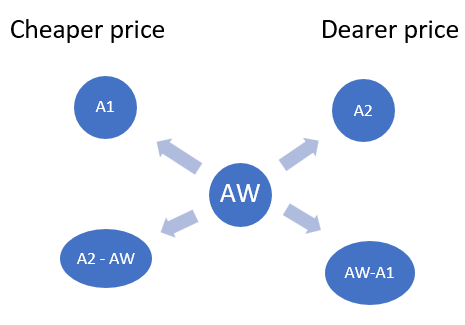
Remember: A1 < Aw < A2
The rule is also applicable for solving questions based on average i.e., speed, percentage, price, ratio etc., and not for absolute values. In other words, we can use this method whenever per cent, per hour, per kg etc., are being compared.
Examples:
- 600g of sugar solution has 40% sugar in it. How much sugar should be added to make it 50% in the solution?
Solution: 40% sugar is in 600g of sugar solution.

Let x g sugar be added.


2. A container is filled with liquid, 6 parts of which are water and 10-part milk. How much of the mixture must be drawn off and replaced with water so that the mixture may be half water and half milk?
Solution: Let the container initially contains 16 L of liquid.
Let a L of liquid be compressing water.


3. How many kilograms of tea worth $ 25 per kg must be blended with 30 kg of tea worth $ 30 per kg, so that by selling the blended variety at $ 30 per kg, there should be a gain of 10%?
Solution: Let the quantity of tea worth $ 25 be x kg.
According to the question,

4. In a mixture of 60 L the ratio of acid and water is 2: 1. If the ratio of acid and water is to be 1: 2, then the amount of water (in litres) to be added to the mixture is


 x = 60 L
x = 60 L
- In a container, milk and water are present in the ratio 7: 5. If 15 L water is added to this mixture, the ratio of milk and water becomes 7: 8. Find the quantity of water in the new mixture.
Sol. Let the quantity of milk and water in initial mixture be 7x and 5x L.

Therefore, quantity of water in initial mixture = 5 x 5 = 25 L
And quantity of water in new mixture = 25 + 15 = 40 L




